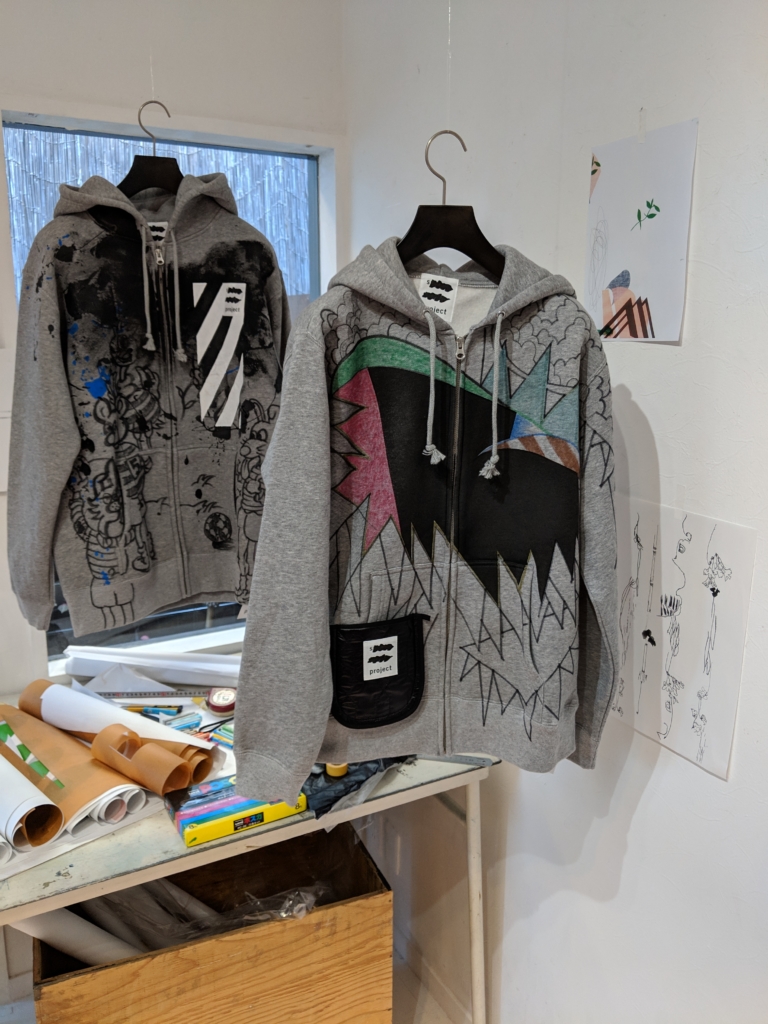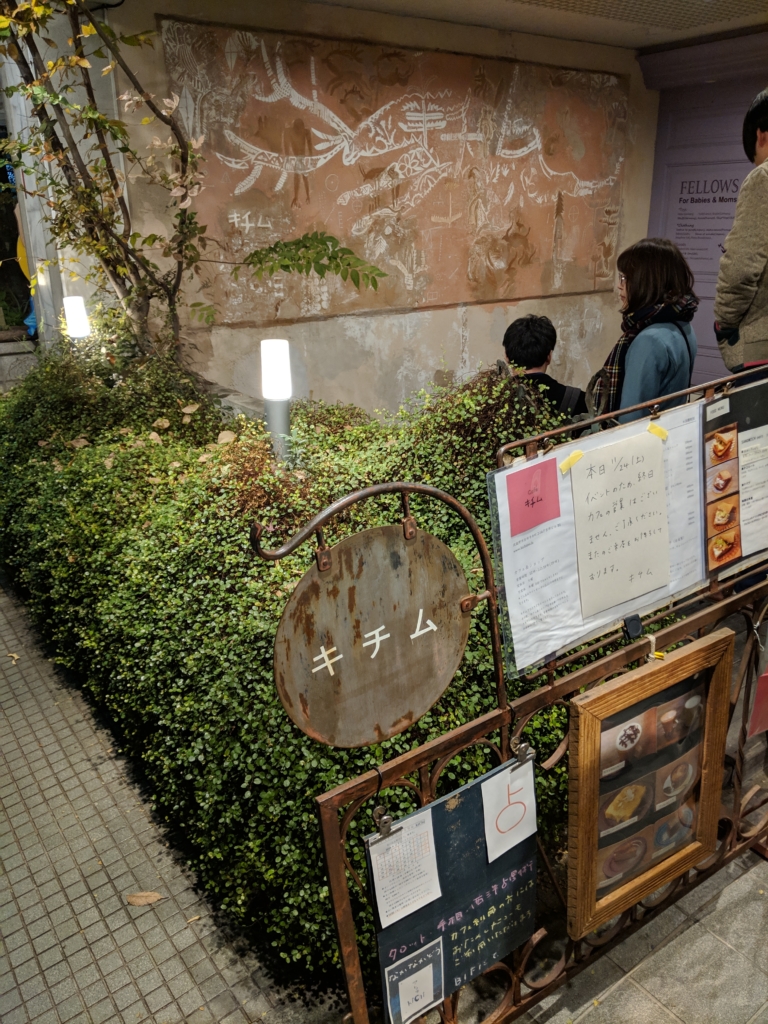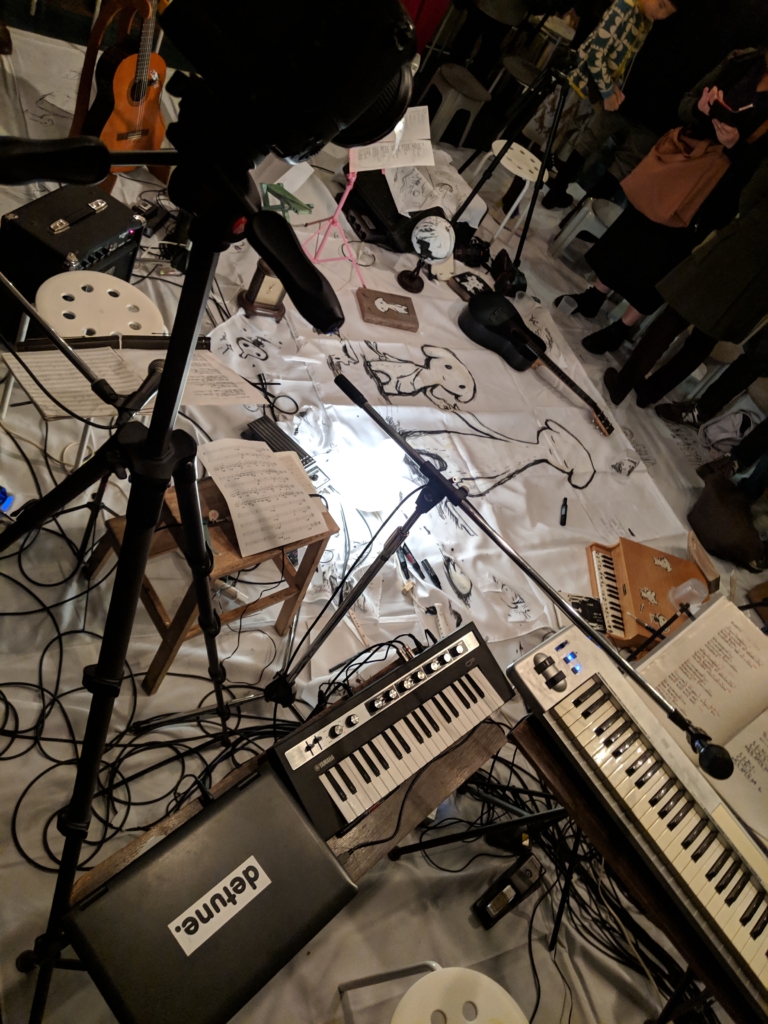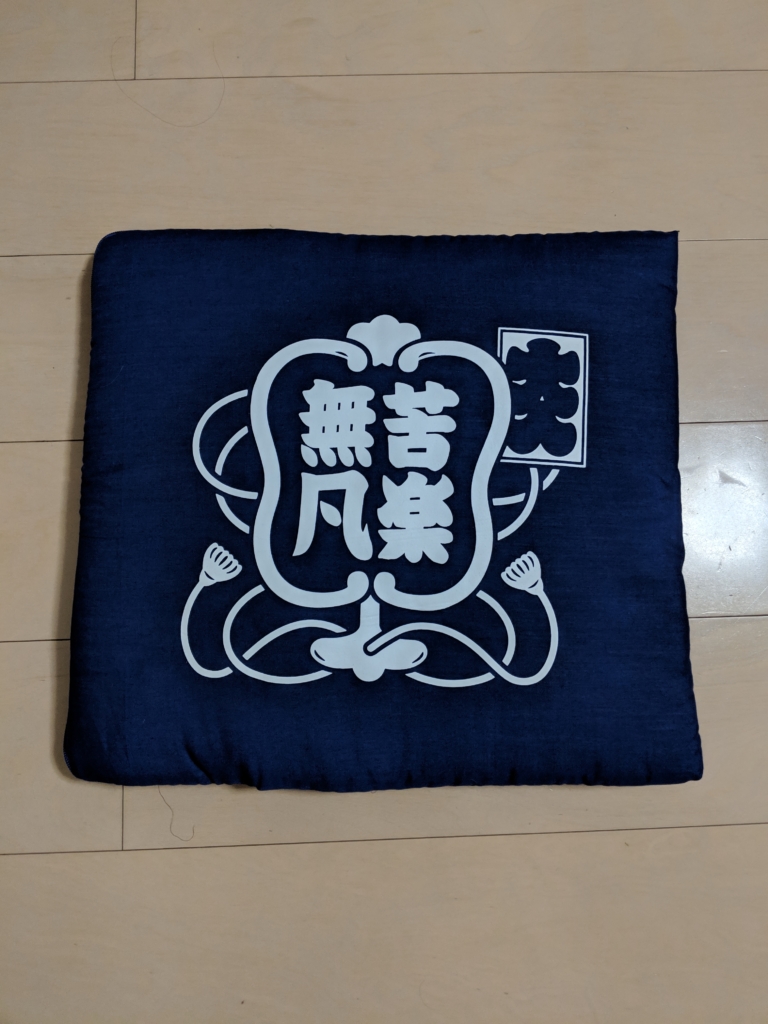Trip Report — Tokyo, Winter 2018–2019
February 11, 2019I spent late October 2018 to mid-January 2019 in Tokyo, my longest stay since studying there for ten months in 2002, and it ended up packed with events of Clammbon-related meaning. A lot happened and I have little time to write things up these days, so here’s my attempt to dash through it all.
First up was an event in Shibuya for Spoken Words Project, a textile and fashion designer who’s done clothing and album art for Ikuko. I’d made a number of pilgrimages to find SWP products before, and this time the venue was a hidden-away boutique in a house far from the station. I bought myself a garment right out of what looked like a museum exhibition. Later, SWP made the rare announcement of a new line of backpacks to be released during my stay, which I pounced on as soon as they were posted to the online store.
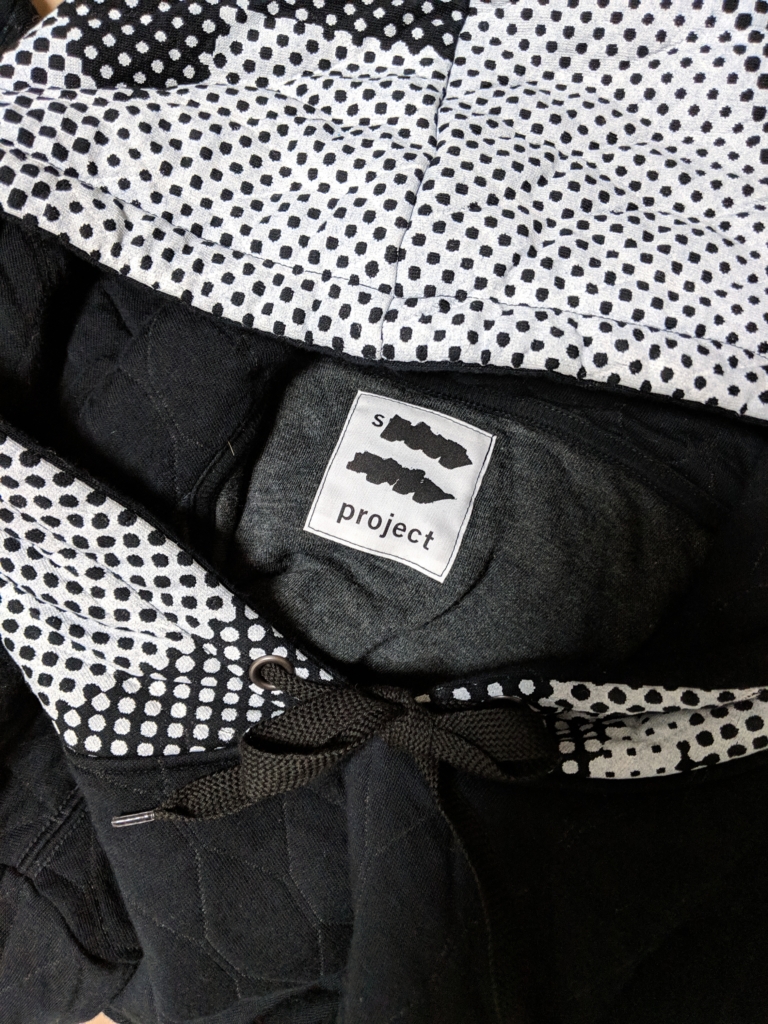 Detail of my new Spoken Words Project hoodie
Detail of my new Spoken Words Project hoodie
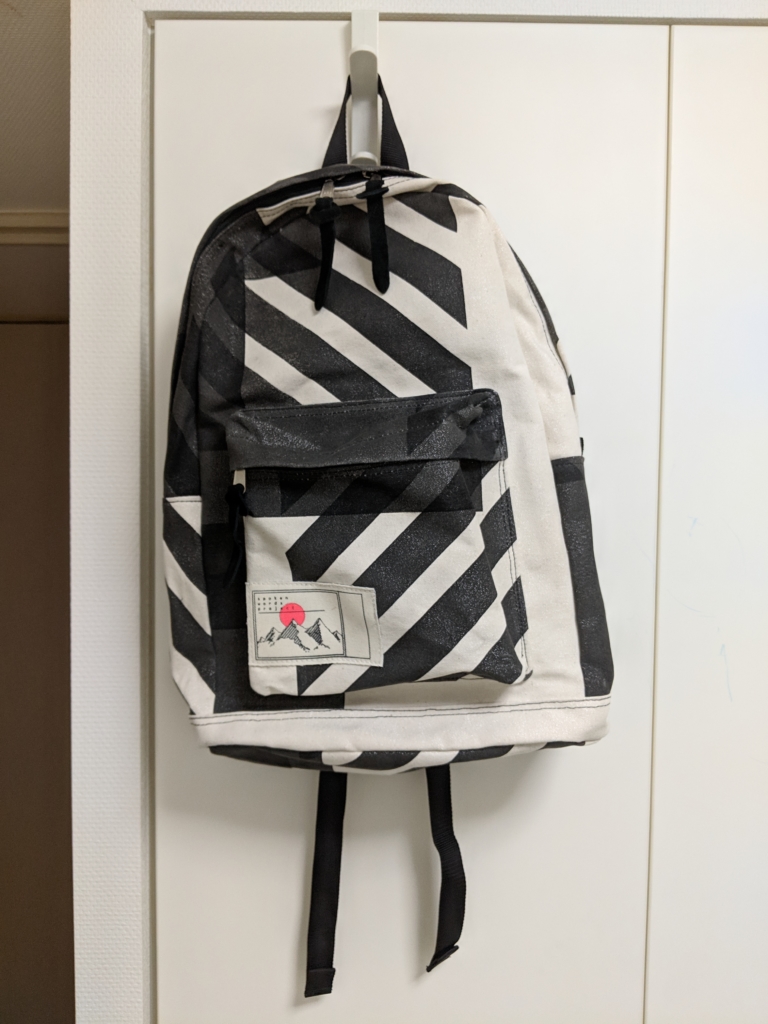 My new Spoken Words Project backpack
My new Spoken Words Project backpack
There weren’t any Clammbon shows during my stay, but among the many concerts I did get to attend, a collaboration between Aoba Ichiko and Detune at Harada Ikuko’s cafe Kichimu was the one I looked forward to the most. In addition to the two musical performers, the comic artist Nishijima Daisuke was also on the bill, though it wasn’t clear how he would participate until I arrived at the cafe. The place was decorated with his drawings, and the floor was papered with a huge sheet for him to draw on. He sprawled drawing in the center of the floor, Aoba and Detune performed in a circle around him, and the audience sat all around them. The show was whimsical, emotional, meditative, and one-of-a-kind, much like the Aoba Ichiko / Tenniscoats performance I’d seen on my last trip.
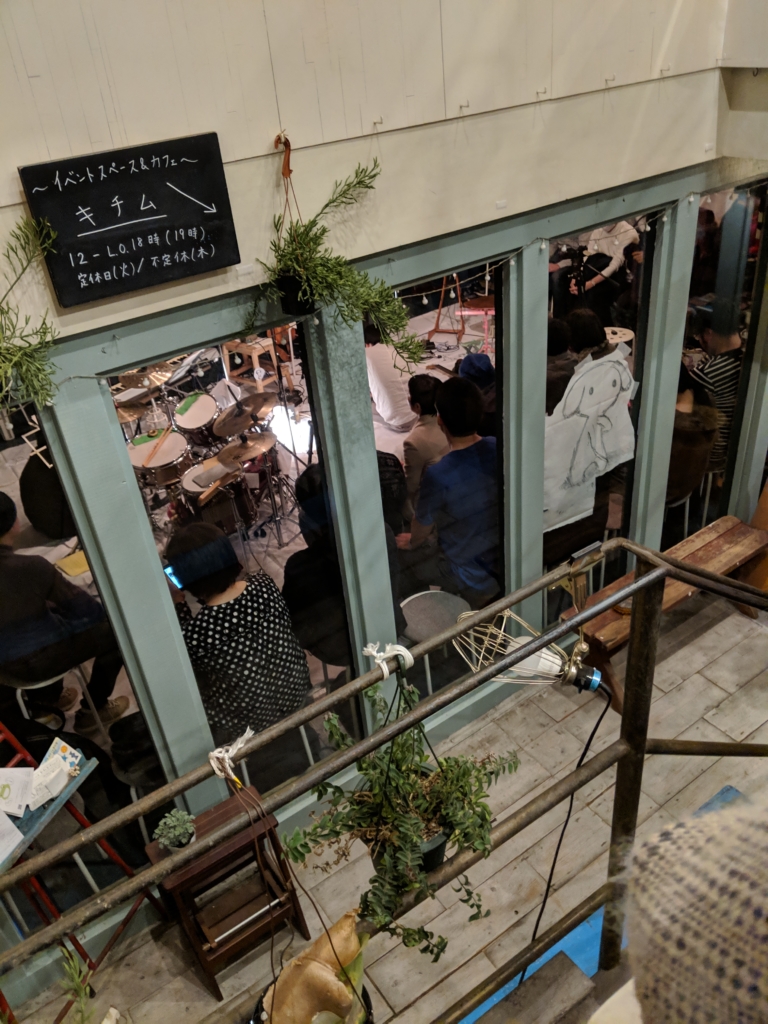 Stairs down into Kichimu, with Nishijima illustration visible in the window
Stairs down into Kichimu, with Nishijima illustration visible in the window
For one of the final songs, Ichiko encouraged the audience to sing along. But when it became apparent that most people didn’t have the words memorized, Harada Ikuko herself materialized to teach us on the fly, line by line! That was a special moment for any Clammbon fans in attendance, which given the close-knit scene was just about everyone. I’d been to Kichimu a number of times before, always with the vague notion that Ikuko might be around at her own cafe, but this was my first time seeing her there. Of course it occurred to me that I could seek her out after the show and try to convey some semblance of the meaning she’d brought to my life over the last twenty years. But I was also highly aware that doing so could very well be a bother, that she was present as herself rather than as the person from Clammbon, and that she’d probably heard the same sentiments from countless people who’ve caught her in moments when she dared to venture out among the crowd. So I resolved not to approach her, and to just appreciate the close encounter of being in a tiny room with her and maybe eighty other people for such a rare event, when I’d only ever seen her onstage or at a formal signing.
As I hung around the shop area, looking for a chance to perhaps get a record signed, someone approached me and poked at my tote bag — it was Ikuko, declaring the name of the brand: “Spoken Words Project!” Of course she recognized the artist she’d worked with, and took it as a cue to start a conversation and help make a guest feel welcome. We talked for a few minutes, during which I think I kept my cool quite respectably, but I couldn’t help steering the topic toward what a big fan of her and of Clammbon I am. She was friendly, appreciative, and gracious, and after a while she called Ichiko over to sign the record of hers I’d just bought. I chatted with Ichiko a bit, too, and then headed home. Almost immediately I wished I’d kept the conversation with Ikuko away from a celebrity / fan relationship and simply stuck to topics we shared, like appreciation for the show we’d just seen or admiration of the SWP brand. But I knew I shouldn’t complain or obsess about it, and I did my best to just be grateful that it had happened at all.
A few weeks later, I attended another event at Kichimu: the closing party for an exhibit of the noren paintings that Yamauchi Masumi makes for display on Ikuko’s keyboard at each Clammbon performance; she’s made one for every show of theirs since the beginning and is thus the most consistent creative contributor to Clammbon outside of the three band members. I expected the place to be swarming with Clammbon fans, but when I showed up it was just a cluster of maybe ten friends drinking around a table, one of whom I quickly gathered was the artist herself. I wandered around the place and admired the artwork, wondering whether it would be best to try to politely join the group or to just wait and see if anyone approached me.
Pretty soon I could overhear that the group was discussing whether they should send someone over to talk to me, and wondering whether I spoke Japanese at all. Masumi came by and tentatively introduced herself as the artist; once the conversation got going and it was clear that there wouldn’t be a language barrier, we talked quite a bit and she got it out of me that I’m a huge Clammbon fan, that I’d learned a lot of my Japanese by translating their lyrics, and that I run this very website. She hauled me back over to the tables to sit with the group, and for a while my strange story was the main topic of conversation. I got to know everyone there, including two other ordinary Clammbon fans who’d also showed up alone. It was a rare occasion of making perfect strangers into genuine friends, in a second language, via a shared interest.
Masumi checked her phone and casually informed me that Ikuko was a bit delayed but on her way over! (I’ll never be sure, but it certainly seemed like Masumi had texted Ikuko something to the effect of “are you still planning on coming to the party? there’s someone here you should meet.”) Having just heard all about the extent of my Clammbon fandom, everyone turned to see my excitement and nervousness. One person joked that they’d have her sit right next to me. The scheduled time for the event was nearly over, but it seemed that the night was just beginning. I sheepishly canceled the dinner I’d planned with a friend in Shibuya so that I could stick around.
Ikuko arrived and Masumi gave her the whole background — it was sort of a perfect way to communicate how much Clammbon has meant to me and how much I’ve done to evangelize them to the world, without having to corner one of the band members and explain it all myself. Soon enough I was telling the story of my first trip to Japan, discovering Kimi wa Boku no Mono and hunting it down at the record store even though I barely knew a word of Japanese. The night went on with a friendly vibe, everyone drifting around between the tables and the art displays, a dozen or so people just hanging out with Harada Ikuko of Clammbon and this oddly devoted foreign fan, talking and joking as one big group, no big deal.
At one point I mentioned to Ikuko that I’d finally managed to buy Moment e.p. 3 that night, having had to wait until I came to Japan to get ahold of it. This led to a conversation about how the band’s new “farm-to-table” business model made it almost impossible for foreign fans to buy Clammbon’s music anymore. She immediately encouraged me to apply to be the first reseller outside of Japan! (I’m currently looking for a local shop in the Bay Area that would be willing to act as the storefront; watch this space for news.)
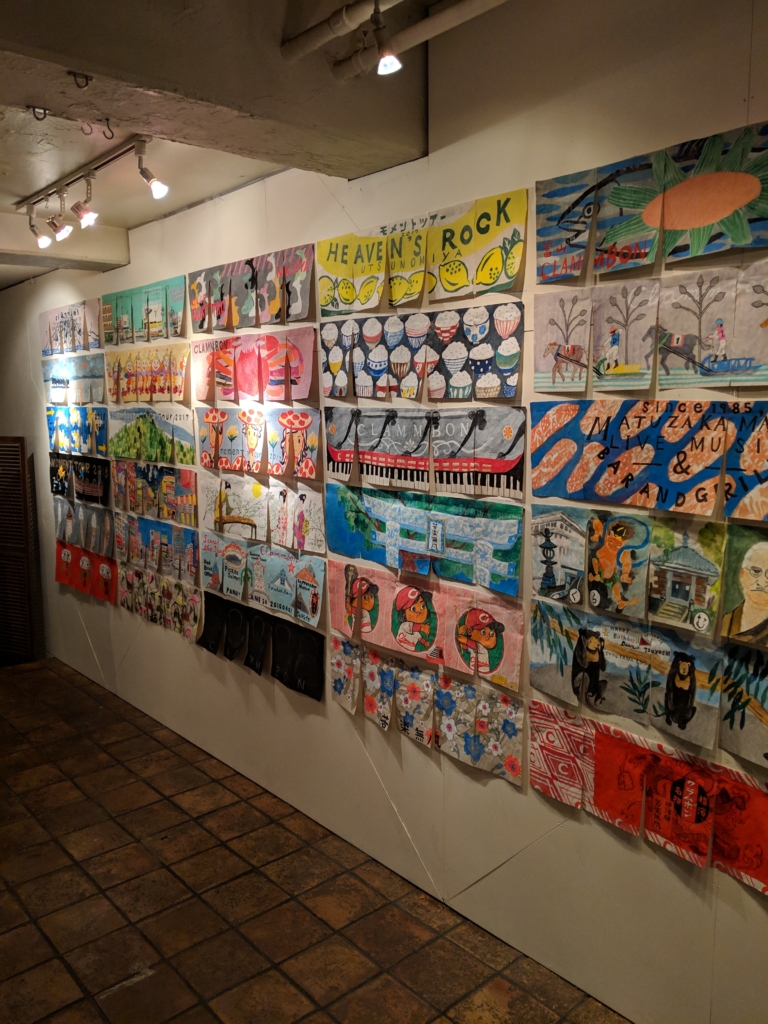 Yamauchi Masumi noren exhibition
Yamauchi Masumi noren exhibition
(As much as I’d love to share it as proof, I’m keeping the photo we all took together private!)
I exchanged contact info with the other two fans. Masumi and Ikuko offered to take a photo with us. Ikuko handed me a flyer for an upcoming “night market” at Kichimu, and invited me to come back then and say hello. One of the other fans and I rode together on the train, as somehow within Tokyo’s colossal transit system we lived only one stop away from each other.
Of course, I came back a few weeks later for the night market; I wasn’t about to turn down a personal invitation from Harada Ikuko. It was a sort of miniature flea market, with tables of clothes, books, housewares, tchotchkes, even someone’s vintage synthesizer collection. I weaved my way around the crowded space, admiring the truly random assortment of stuff that occurs when friends of Kichimu get together to empty out their storage, until Ikuko found me.
She greeted me like an old friend: “Ah! You made it!” and gave me a little welcome and explanation of what was for sale. One thing she made sure to point out was a box of seat cushions left over from Clammbon’s performance at Ryougoku Kokugikan. She proudly explained how they were specially designed to complement the sumō arena venue, pointed out the phonetically-contrived traditional kanji Clammbon logo and the nuances of the ōiri sign, and demonstrated how it also becomes a tote bag or a makeshift umbrella. A steal at five hundred yen. When I looped back around to buy one, Ikuko introduced me to her manager as a Clammbon evangelist to the English-speaking world. I happily accepted her personalization of the cushion, stopped by a kids’ clothes table to get some outfits for my kiddo, and headed home.
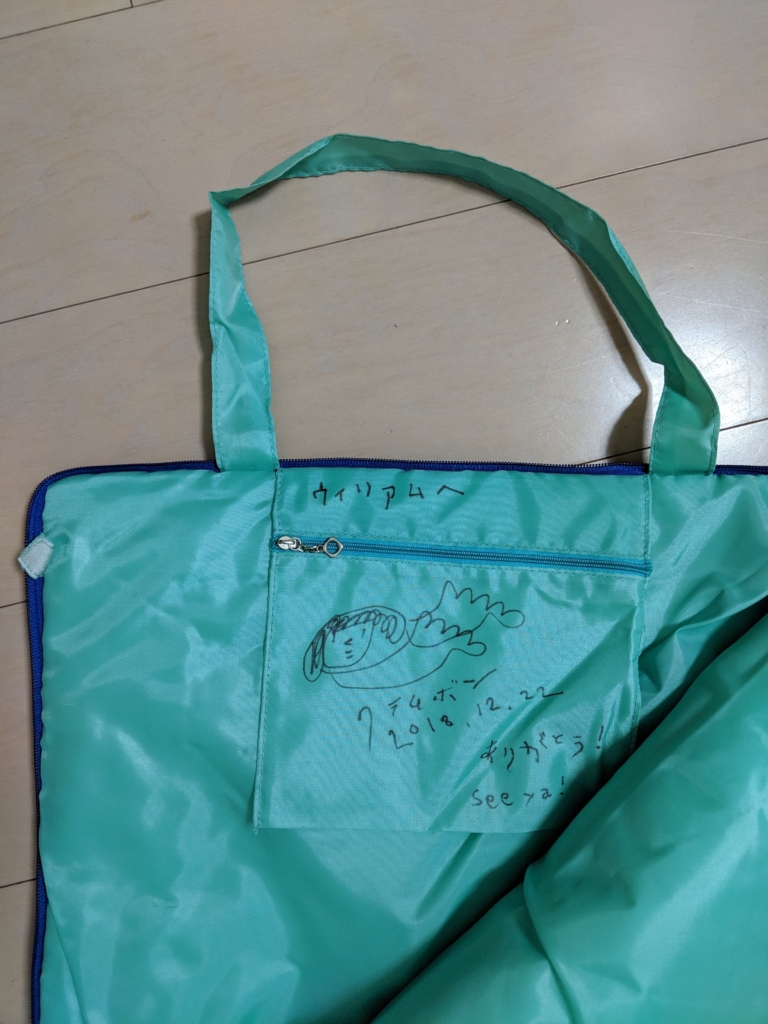 Ryōgoku cushion inside, personalized
Ryōgoku cushion inside, personalized
It took almost twenty years, but I couldn’t have asked for a better series of events to become acquainted with a Clammbon member. Somehow I got to have a number of conversations with Ikuko, tell the story of how I came to discover Clammbon and what I’ve done to share their music with the world, take a photo together, receive a signed item dedicated to me, and be invited to sell their records — everything a fan could want — and all without approaching her myself, requesting anything, or otherwise acting like a fan. Instead, her friendliness and openness, and the enthusiasm of the little community around her, allowed it all to happen naturally.
After that, there was one more Clammbon-adjacent event in store for me. Before this trip to Japan, I’d decided that it was finally time to own a piece by ka na ta, a fashion designer who has done Clammbon’s wardrobe for a few tours and has been otherwise closely affiliated with the band in a variety of ways. His style fit precisely with what I wanted in a coat, and the Clammbon connection would make it that much more meaningful to own. I made the 30-minute walk from Shibuya Station to the residential area where an unmarked basement door leads to the ka na ta showroom. A kind staff member helped me try on some coats and made friendly conversation about our shared tastes in music. In fact, I spotted that Saya from Tenniscoats had scrawled the band name on the concrete wall of the shop when they had played a tiny show there — another link in the close-knit community around Clammbon and associated artists. One coat would be about three months’ discretionary spending, so I promised to think about it and come back soon to choose one.
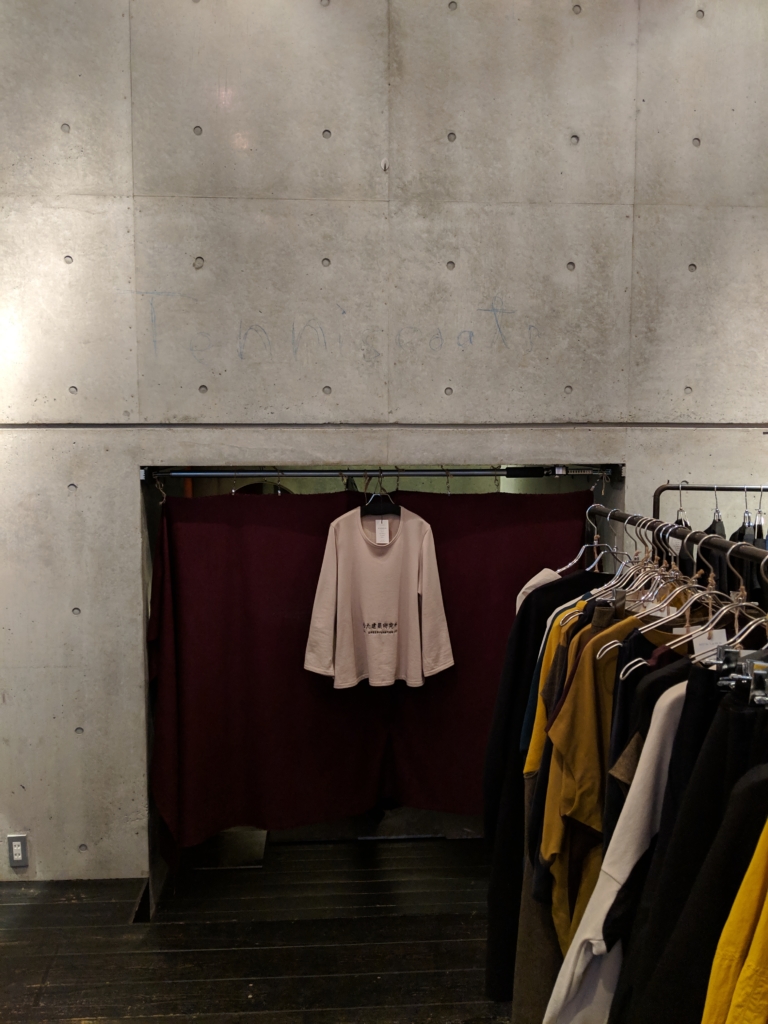 “Tenniscoats” scrawled on the wall at the ka na ta shop
“Tenniscoats” scrawled on the wall at the ka na ta shop
Near New Year’s Eve, the ka na ta Instagram account announced that the designer himself would be running the shop for a few days, to allow the staff to have the holidays off. It seemed like a rare chance to meet the designer and finally choose my coat. I journeyed back to the shop and ended up spending a long time there with him indeed, sipping tea, talking about bands and travel and such, and ultimately choosing the mods denim coat!
That’s as short as I can make this story. The trip was overall one of the most meaningful and memorable chapters in my life, and the Clammbon thread was a special highlight. Thanks for reading!

